Starlight bristlenose pleco - Ancistrus sp. L182
Scientific name: Ancistrus sp. L182
Common name: Starlight bristlenose pleco
Family: Loricariidae
Usual size in fish tanks: 13 - 16 cm (5.12 - 6.3 inch)
014
Recommended pH range: 6 - 7.5
Recommended water hardness: 8 - 14°N (142.86 - 250ppm)
0°C 32°F30°C 86°F
Recommended temperature range: 22 - 26 °C (71.6 - 78.8°F)
The way how these fish reproduce: Spawning
Where the species comes from: South America
Temperament to its own species: peaceful
Temperament toward other fish species: peaceful
Usual place in the tank: Bottom levels
Origin
The Starlight Bristlenose Pleco (Ancistrus sp. L182) originates from the rivers and streams of South America. These fish are commonly found in slow-moving waterways where the water is soft and slightly acidic. Their natural habitat includes areas with plenty of hiding places, such as submerged rocks, tree roots, and dense vegetation, providing them with ample cover during the day.
Lifespan
The Starlight Bristlenose Pleco has an impressive lifespan of up to 14 years when given the right care in a well-maintained aquarium. Ensuring clean water conditions, proper diet, and a stress-free environment will contribute to their long-term health.
Short Description
The Starlight Bristlenose Pleco gets its name from the tiny white or light-colored spots scattered across its dark body, resembling stars in the night sky. These fish are typically shy and may spend much of their time hiding, especially during the day, as they are nocturnal by nature. Over time, however, they may become more comfortable and venture out during feeding times.
This species tends to grow slightly larger than other types of Bristlenose Plecos, reaching a size of 13-16 cm (5.12-6.3 inches) in captivity. Due to their size, they require an aquarium of at least 40 gallons (~181 liters, 48 US gallons) to thrive. It is important to house them as the only bottom-dwelling species in the tank, as they may become territorial if housed with other plecos or bottom-dwellers.
Despite their timid nature, Starlight Bristlenose Plecos are peaceful fish. Providing plenty of hiding spots with caves, rocks, and driftwood will help them feel secure. Although driftwood is not required in their diet, it can help release beneficial tannins into the water, mimicking their natural habitat. Additionally, they are known to produce a significant amount of waste, so ensure the tank has a strong filtration system and perform regular water changes to maintain water quality.
Food and Feeding
Starlight Bristlenose Plecos primarily thrive on an algae-based diet. To meet their nutritional needs, provide sinking algae wafers or pellets. Supplement their diet with fresh vegetables like spinach, zucchini, cucumber, and romaine lettuce. Offering a variety of foods will help keep them healthy and promote vibrant coloration.
It’s important to note that while they enjoy consuming algae, they may not be sufficient algae cleaners for the tank on their own. Feeding them regularly with vegetables and specialized pleco foods will ensure they receive all necessary nutrients.
Sexing
Sexing Starlight Bristlenose Plecos can be done by observing the development of bristles on their heads. Males typically have more prominent bristles, especially as they mature. Females, in comparison, tend to have fewer and smaller bristles. Additionally, males may grow slightly larger than females as they reach adulthood.
Breeding
Breeding Starlight Bristlenose Plecos in captivity can be challenging but rewarding. To encourage breeding, the water must be soft and acidic, mimicking the conditions of their natural blackwater habitats. The tank should be dimly lit, as low lighting helps them feel more at ease, increasing the likelihood of spawning. Almond leaves, which release tannins and slightly acidify the water, can also be added to create optimal breeding conditions.
The male Starlight Bristlenose Pleco is responsible for taking care of the eggs and fry. He will guard the nest diligently, fanning the eggs to ensure they receive enough oxygen until they hatch, usually after 3-5 days. Once the fry are free-swimming, they will remain hidden under the male’s protection until they are strong enough to venture out on their own.
It is often a good idea to remove the female after spawning to prevent her from distracting the male from his parental duties. The fry can be fed on powdered fry food or freshly hatched brine shrimp until they are large enough to consume algae wafers and vegetables like the adults.
Tank Setup and Maintenance
Providing a suitable environment is key to keeping Starlight Bristlenose Plecos healthy and happy. A minimum tank size of 40 gallons (~181 liters) is required for adult specimens, especially since these plecos are larger than many other Bristlenose varieties. The tank should include plenty of caves, rocks, and other hiding places for the fish to feel secure. Using dim lighting, either with floating plants or other shading, will also help them adapt to their environment.
Filtration is important for maintaining high water quality, as Starlight Bristlenose Plecos produce a significant amount of waste. Regular water changes are necessary to keep the water clean and the fish stress-free. Additionally, keeping the temperature between 22-26°C (71.6-78.8°F), with a pH of 6.0-7.5, will ensure that the water conditions are ideal for their health and longevity.
Final Thoughts
The Starlight Bristlenose Pleco is a peaceful, nocturnal species that makes a great addition to larger aquariums. With proper care, these stunning plecos can live up to 14 years, adding beauty and functionality to your tank as they help keep algae under control. By providing a suitable environment, balanced diet, and regular maintenance, your Starlight Bristlenose Pleco will thrive and become a cherished member of your aquarium community.

 Adonis
Adonis  Lyre
Lyre  Bristlenose
Bristlenose  Gold
Gold  Bushymouth
Bushymouth  Spotted
Spotted 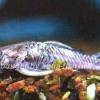 Medusa
Medusa  Bristlenose
Bristlenose  Spotted
Spotted  Catfish
Catfish  Bushynose
Bushynose  Bristlenose
Bristlenose 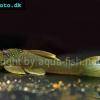 Green
Green  LDA-33
LDA-33  Snowflake
Snowflake  Gold
Gold  Gold
Gold  Bulldog
Bulldog  Dasyloricaria
Dasyloricaria  Butterfly
Butterfly  Whiptail
Whiptail  Amazon
Amazon  Twig
Twig  Spotted
Spotted  Spotted
Spotted  Lemon
Lemon  Pleco
Pleco  Peruvian
Peruvian  Zebra
Zebra  Pleco
Pleco  Hypostomus
Hypostomus  Pleco
Pleco  Suckermouth
Suckermouth  Spotted
Spotted  Woodeating
Woodeating  Golden
Golden 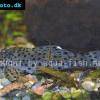 Sultan
Sultan  Multiradiatus
Multiradiatus  Marbled
Marbled  Pleco
Pleco  Dwarf
Dwarf 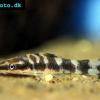 Dwarf
Dwarf  Dwarf
Dwarf 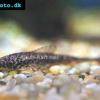 Oxyropsis
Oxyropsis  Orange
Orange  Blue
Blue  Clown
Clown  Royal
Royal  Blue
Blue  Rubber
Rubber  Goby
Goby  Wormline
Wormline 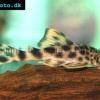 Para
Para  Tiger
Tiger 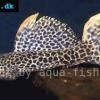 Leopard
Leopard  Spiny
Spiny 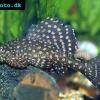 Marbled
Marbled 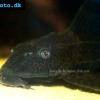 Amazon
Amazon 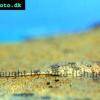 Common
Common  Sunshine
Sunshine  Golden
Golden